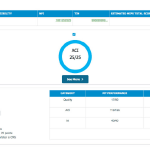My dear electronic health records How do I dislike thee? Let me count the ways Adaptation of Sonnet 43 By Elizabeth Barrett Browning, 1806–1861 As my tenure as physician editor winds down, it’s worth reviewing some of the more nettlesome issues confronting clinicians that have been previously discussed in these pages and gauge their current…


